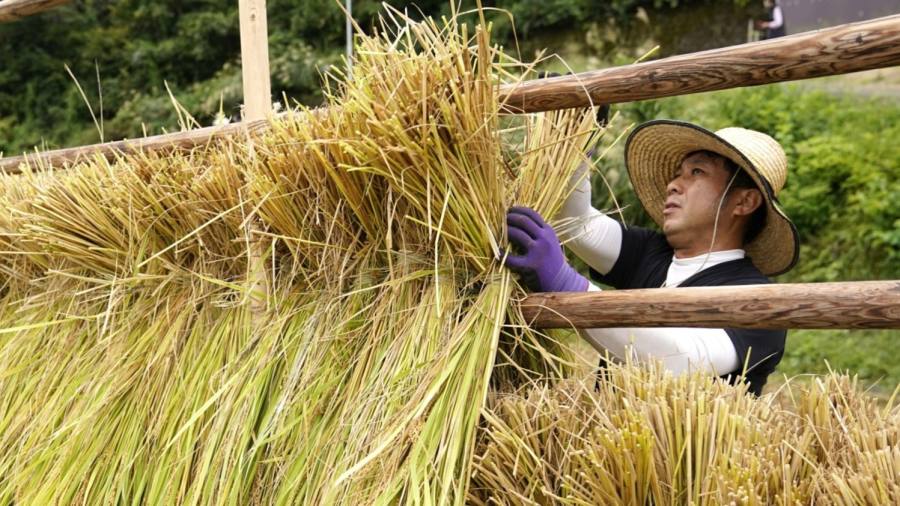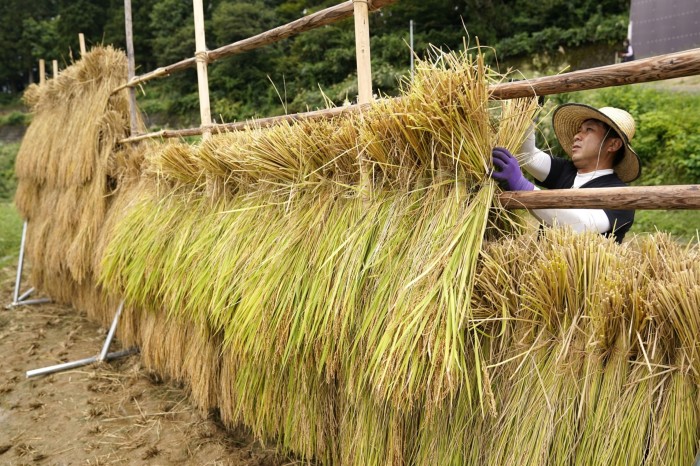
Receive free Sustainability updates
We’ll send you a myFT Daily Digest email rounding up the latest Sustainability news every morning.

After spending 14 years as a banker at Nomura, Shinji Okuda made an unlikely career switch during the height of the pandemic, in 2020. He joined a start-up tasked with helping reduce Japan’s heavy reliance on petroleum-based plastic — by using rice, instead.
Then, last year, the 40-year-old was promoted to lead a subsidiary of the Biomass Resin Holdings company, which has its roots in Niigata — the prefecture north-west of Tokyo and the country’s largest producer of rice.
“The company didn’t have enough people but it had very high ambitions and a clear vision,” says Okuda, when asked why he left Japan’s biggest brokerage to join a little-known start-up. Now, as president of Biomass Resin Minamiuonuma, he explains: “I knew the future was going to be tough but the business was exciting and I thought I would be able to enjoy my life more.”
Established in late 2017, the company, named after a city in Niigata, turns locally produced rice that is old or damaged and not suitable for consumption into low-carbon plastic that can be used to make products from toys to bin bags.
For Japan, which is the world’s second-biggest producer of plastic waste per capita after the US, bioplastics are a way to help achieve climate goals. Biomass Resin wants to produce 5 per cent, or 100,000 tonnes, of the government’s target to expand the annual use of biomass plastics to 2mn tonnes by 2030.
According to Yano Research Institute, the domestic market for bioplastics remains small, with an estimated 92,580 tonnes in shipment volumes last year. But Okuda says demand for rice resin stems from other structural challenges being faced by Japan. Falling rice consumption has led to food loss, abandoned cultivated land, and lower income for rice farmers. So rice resin offers another use for rice production.
“Environmental awareness is still quite low among Japanese users and manufacturers of plastic,” Okuda says. “But there is a strong sense of crisis towards the future of rice and farming, which is why there is hope that our material can contribute to shaping a new form of agriculture.”
Supplies of domestically produced rice are considered more stable and less expensive than imports of the more widely used raw materials for bioplastics, such as corn from the US or sugar cane from Brazil.
Biomass Resin has recently established factories in Kumamoto and Fukushima with the goal of opening 10 factories in Japan. It also operates a plant in Vietnam and is aiming to expand into other countries in south-east Asia. Experts say producing large volumes will be key to lowering the cost of rice resin, with rice-based plastics estimated to be roughly 1.5 times more expensive than petroleum-based products, according to the company.
The group produces plastic comprising up to 70 per cent rice, with the rest still derived from petroleum. The plastic is not biodegradable but the use of rice does help reduce the carbon dioxide emitted when it is burnt in incinerators. Within the next year or so, the company plans to lift the rice content to 75 or 80 per cent and substitute the remainder with plant-based fibre.
In addition to using rice for its sustainability efforts, Niigata — known as the setting for Yasunari Kawabata’s 1948 classic novel Snow Country — is also expanding the use of “natural refrigerators” to store sake, vegetables and other goods. In essence, this involves using snow instead of electricity for cooling.
Creating yukimuro, or snow cellars, is a practice that dates back to the eighth century but it was mostly abandoned after electric refrigerators became widespread from the 1950s. In Niigata, however, snow-filled storage rooms were revived as a measure against earthquake-triggered blackouts and a modern yukimuro was built a decade ago to cool and brew Hakkaisan, one of the prefecture’s most popular sake brands.
Yoshiomi Ito, an expert and consultant on snow-based cooling systems, says the use of snow as natural cooling is also gaining prominence as a way to cut carbon emissions, as well as to address soaring electricity costs. There is further potential to use snow to store medicines and vaccines in low and stable temperatures, he adds.
In 2021, Maruso, a Niigata-based logistics company, obtained the first regulatory approval to operate a warehouse using snow for its cooling system. Ito says snow warehouses can cater “to clients who cannot store goods themselves due to the high electricity costs”. They can serve another purpose, too: “as a marketing tool, as an environmentally friendly product”.